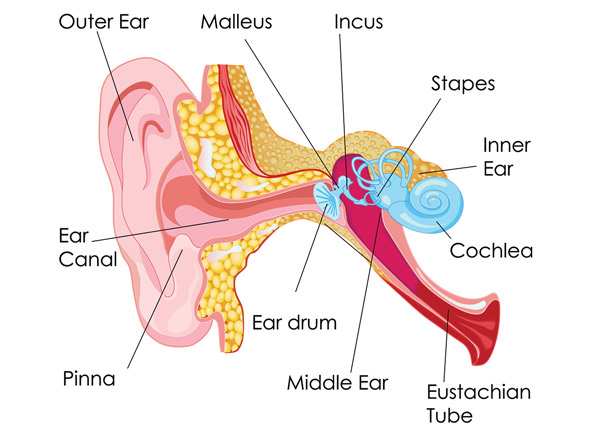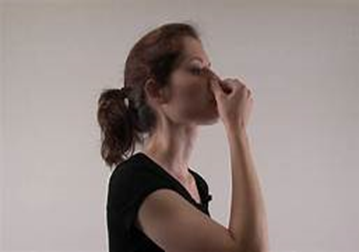Hearing Loss
How the Ear Works
The ear
The ear is divided in three parts:
Outer Ear
(Pinna and ear canal)
Middle Ear
(Ear drum, 3 bones and Eustachian Tube)
Inner Ear
(Cochlea)

Outer Ear
The visible part is called the auricle, also known as the pinna, that receives and directs the sound waves into the ear canal. Without its unique shape, the sound would take a more direct impact into the ear canal and part of the sound would be lost, making it harder to understand sounds.
Middle Ear
Once the sound is received in the ear canal, the eardrum vibrates creating a vibration on the three ear bones (Malleus, Incus, Stapes).
In the middle ear, we also find the Eustachian tube, its function is to equalise the air pressure on both sides of the eardrum, ensuring that pressure does not build up in the ear. The tube opens when you swallow, thus equalising the air pressure inside and outside the ear.
When you feel your ears plugged, you try to equalise pressure plugging your nose and sending the air to your ears. The Eustachian tube make this change in pressure possible.
When there is a situation where the pressure on the inside of the eardrum is different from the out side of it, a build up pressure occurs, preventing the eardrum to vibrate properly, causing some discomfort, tinnitus or pain.
Inner Ear
The inner ear contains the Cochlea that is dedicated to hearing, and the Vestibular system dedicated to your balance. The cochlea is a snail shell shape that has auditory hair cells on the inside of it. These cells will transmit the sound to the auditory nerve that will finally send the signal to the brain, where the sound is analyzed.
The Vestibular is the organ of equilibrium. Its function is to register the body’s movements, sending information to the brain from three ring-shaped passages with different orientation that contains fluid and some little crystals that will react to the movement, ensuring that we can keep our balance.
Any alteration in this system will result in problems like vertigo, dizziness or poor balance. Hearing loss does not always produce alterations in the equilibrium, but in many cases people with balance problems have hearing loss associated.
Now that we know the different parts of the hearing system, we will learn what can produce hearing issues, and when it can be treated by a Doctor, or by an Audiologist or a Hearing Instrument Specialist.

When you feel your ears plugged, you try to equalise pressure plugging your nose and sending the air to your ears. The Eustachian tube make this change in pressure possible.

The inner ear.
Make Us Your Partners in Hearing
Let’s embark on your hearing journey together.
Do you have questions about your hearing? We’re here to help and guide you. You deserve to enjoy every small, incredible sound life has to offer. Let’s work together to find the perfect hearing solution for you.
Sound is the Paintbrush; Hearing is Art
Bring the beauty of sound back into your life.
Email Us
Phone
Fax
Open Hours
Tues/Thurs: 9AM - 5PM
Fri: 9AM - 3PM
Address
Aurora, ON L4G 1N1